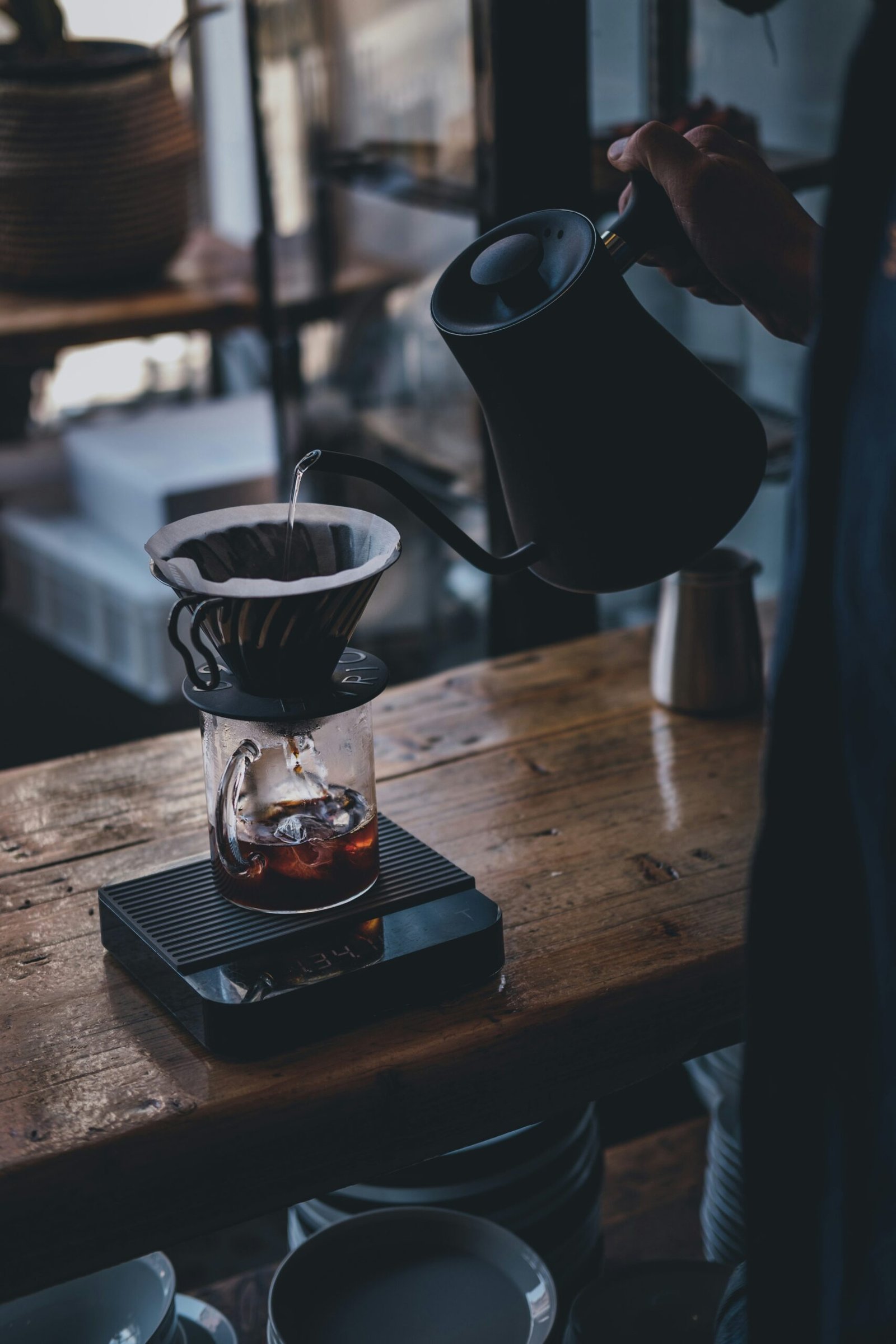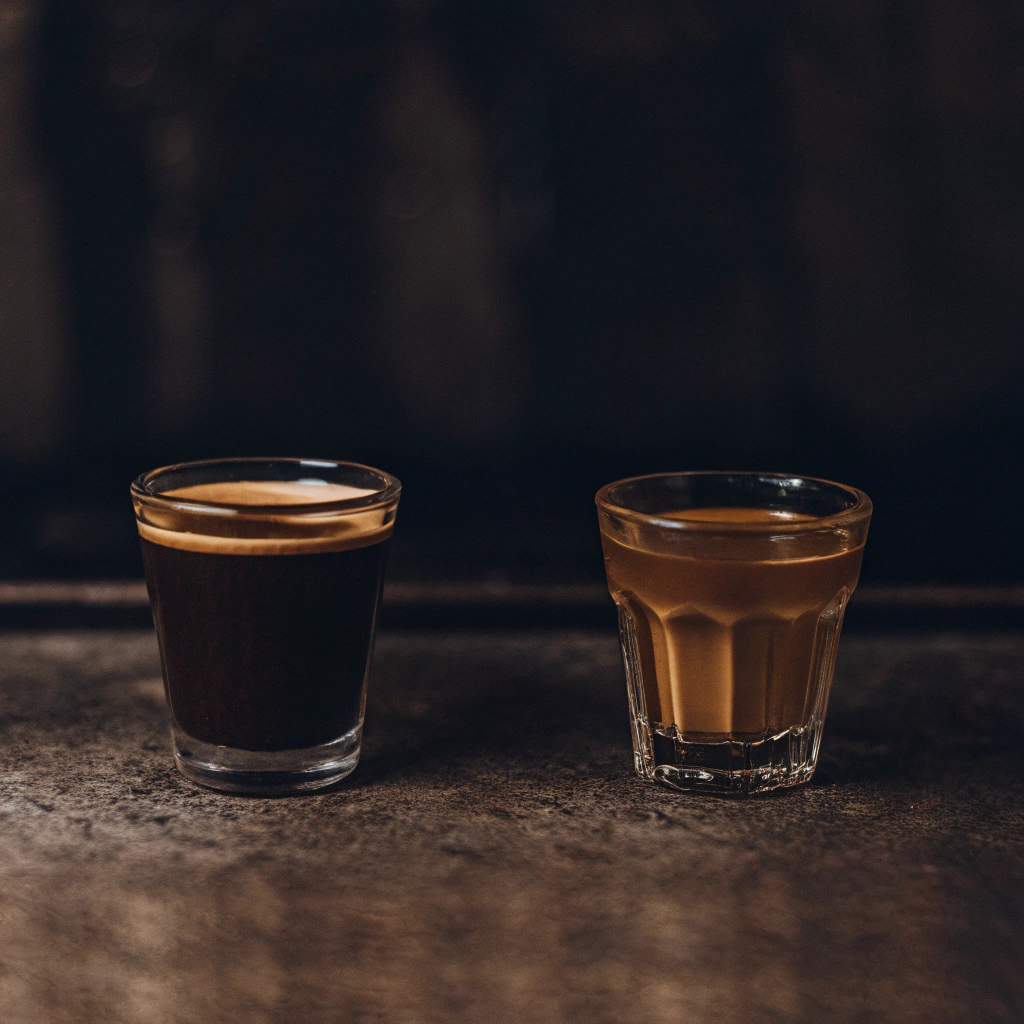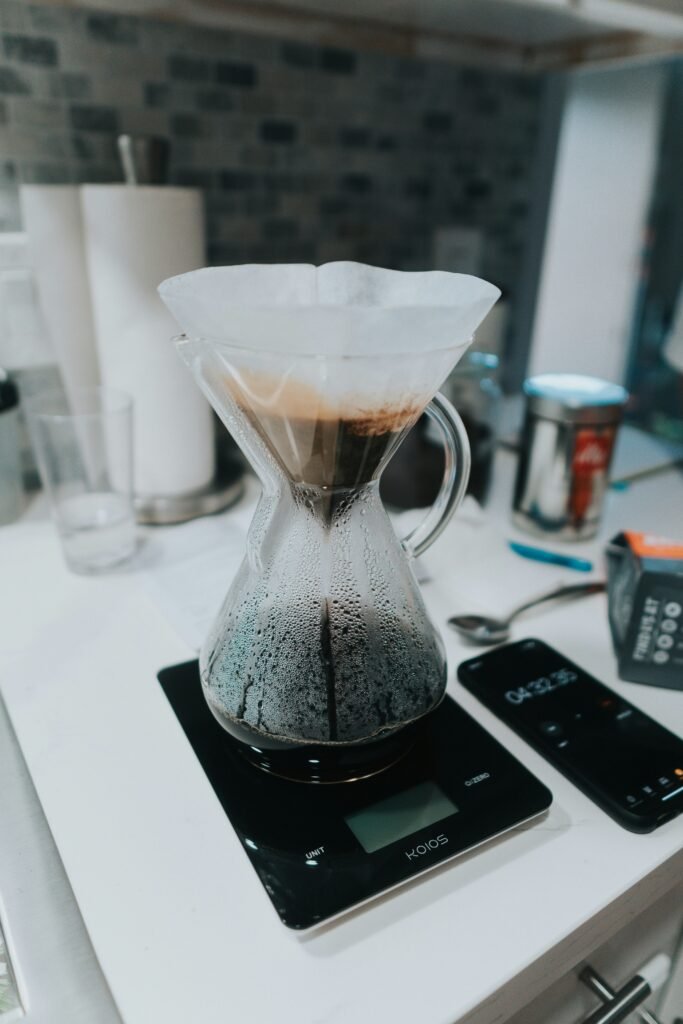You want espresso's richness with pour over's clarity? This sounds great. But these methods clash, leading to brewing confusion and poor results.
Technically, you cannot make "pour over espresso." Espresso requires high pressure for extraction, which pour over methods do not generate. Pour over is a gravity-fed filtration method. They are fundamentally different brewing processes producing distinct coffee styles.

It's easy to get terms mixed up in the wonderful world of coffee. Many people love the strong taste of espresso. Others prefer the clean taste of pour over. Trying to combine them directly doesn't really work as they are distinct. I want to help you understand why these methods are different and how to make the best coffee with each one. As someone who makes precision espresso accessories at SIF Coffee Tools, I appreciate when each method is done right.
Can you do a pour-over with espresso?
You have espresso beans or an espresso machine. Now you wonder if pour over is an option. This can lead to some messy experiments.
No, you cannot make true espresso using a pour-over method. You also cannot use a pour-over brewer on an espresso machine. These are distinct brewing systems that are not interchangeable if you want the characteristic results of each.

I understand the curiosity here. Sometimes we want to mix and match to find something new. However, "espresso" specifically refers to coffee brewed under high pressure. Pour over relies on gravity.
Why They Don't Mix Directly
Let's break down the core reasons:
- Espresso Needs Pressure[^1]: An espresso machine forces hot water through a tightly packed puck of fine coffee grounds at around 9 bars of pressure (or more). This pressure is essential for creating the concentrated shot and the signature crema. Pour over devices like a Hario V60 or Chemex have no way to generate this pressure.
- Pour Over Needs Filtration[^2]: Pour over uses a paper or metal filter to separate the grounds from the brewed coffee, resulting in a cleaner cup. While an espresso portafilter basket is a filter, it's designed for pressure, not gentle gravity flow with coarser grounds.
- Equipment is Specific: You use a portafilter and an espresso machine for espresso. You use a dripper, a filter, and a kettle for pour over. They are not designed to work together.
Using "Espresso Roast[^3]" Beans for Pour Over
Now, can you use beans marketed as "espresso roast" for pour over? Yes, absolutely. An "espresso roast" is just a roast profile (often darker, but not always). The beans themselves can be brewed any way you like. When I use darker roasts for pour over, I often adjust my water temperature slightly lower or aim for a slightly quicker brew time to avoid over-extracting bitter notes. The key user insight about "the flavor you like, is right" definitely applies here.
So, you can't make espresso with a pour over, but you can make pour over coffee using beans that were roasted with espresso in mind. Just remember to grind them appropriately for pour over, not for espresso!
| Method Feature | Espresso | Pour Over |
|---|---|---|
| Key Mechanism | High Pressure (e.g., 9 bars) | Gravity & Filtration |
| Equipment | Espresso Machine, Portafilter, Tamper | Dripper, Filter, Kettle |
| Interchangeable? | No | No |
| "Espresso Roast" Beans | Can be used (grind for pour over) | Can be used (grind for pour over) |
How is pour-over different from espresso?
You see pour over and espresso on cafe menus. They seem so different. Understanding these differences helps you choose or brew better.
Espresso is a fast, concentrated coffee made with high pressure, resulting in a thick body and crema. Pour-over is a slower, gravity-fed method using a filter, producing a cleaner, brighter cup with more nuanced flavors.

These two brewing styles are like night and day in the coffee world, though both are fantastic when done well. I've spent years focused on perfecting espresso extraction with SIF Coffee Tools, but I also deeply appreciate a well-made pour over.
A Tale of Two Brews
Let's dive deeper into what sets them apart:
- Brewing Mechanism: This is the biggest difference. Espresso uses about 9 atmospheres of pressure to force water through finely-ground coffee. Pour over involves gently pouring hot water over medium-coarse grounds in a filter, letting gravity do the work.
- Grind Size: Espresso requires a very fine, consistent grind. This creates resistance for the pressurized water. Pour over needs a medium to medium-coarse grind. This allows water to flow through at the right pace without clogging or under-extracting.
- Brew Time: Espresso shots are pulled quickly, typically in 20-30 seconds. A pour over brew can take 2-5 minutes, depending on the volume and device.
- Taste & Texture: Espresso is known for its intense, concentrated flavor, syrupy body, and a rich reddish-brown foam called crema. Pour over coffee generally highlights the coffee's origin characteristics with more clarity. It has a lighter body and no crema.
- Equipment: Espresso needs an espresso machine, portafilter, and tamper. Pour over requires a dripper (like V60, Kalita Wave, Chemex), a paper or metal filter, and a kettle (preferably gooseneck for control).
The difference in pressure and filtration dramatically impacts the final cup. Espresso extraction is more aggressive. Pour over is a gentler infusion.
| Feature | Espresso | Pour Over |
|---|---|---|
| Pressure | High (approx. 9 bars) | Gravity (Atmospheric) |
| Grind Size | Fine | Medium to Medium-Coarse |
| Brew Time | 20-30 seconds | 2-5 minutes |
| Mouthfeel | Syrupy, Full-bodied | Lighter, Tea-like, Clean |
| Flavor Profile | Concentrated, Intense, Roasty notes common | Nuanced, Bright, Highlights origin notes |
| Crema | Yes (Signature foam) | No |
| Equipment Cost | Generally Higher | Generally Lower |
What is the formula for pour-over coffee?
Want consistently great pour-over coffee? A good starting formula or ratio is key. Winging it often leads to disappointment.
A common pour-over coffee formula is a coffee-to-water ratio between 1:15 and 1:17. For example, for every 1 gram of coffee, use 15 to 17 grams of water. Start with 1:16 (e.g., 20g coffee to 320g water).

While many advanced baristas develop an intuitive feel, I always start with a scale and a timer. Ratios provide a reliable baseline. From there, you can adjust to your preference, as the real key is finding "the flavor you like," as my insight notes.
Key Elements of the Pour-Over Formula:
Besides the ratio, other factors form the "formula" for a good pour over:
-
Coffee-to-Water Ratio[^4]: As mentioned, 1:15 to 1:17 is a great starting range. Let's use 1:16 as an example:
- 15 grams of coffee x 16 = 240 grams of water
- 20 grams of coffee x 16 = 320 grams of water
- 25 grams of coffee x 16 = 400 grams of water
Using a scale to measure both coffee and water is crucial for consistency.
-
Grind Size[^5]: This is very important. For pour over, you need amedium to medium-coarse grind. Think of something like coarse sand or sea salt. Too fine, and it will clog and over-extract (bitter). Too coarse, and it will under-extract (sour, weak).
-
Water Temperature[^6]: Your water shouldn't be boiling furiously. The ideal range is typically 90-96°C (195-205°F). Lighter roasts can often handle hotter Pwater. Darker roasts might benefit from the lower end to prevent scalding. As per the insights, pay attention to water temperature is vital.
-
Brewing Technique & Time:
- Bloom: Start by pouring just enough water (about twice the weight of the coffee grounds) to saturate all the grounds. Let it sit for 30-45 seconds. This "bloom" releases CO2.
- Main Pour: Pour the remaining water slowly and evenly, often in pulses or a continuous spiral. Injection speed as noted in the insights, matters. A gooseneck kettle helps immensely.
- Total Brew Time: Aim for a total brew time of 2:30 to 4:00 minutes for typical single-cup brews (e.g., 20g coffee). Adjust grind size to hit this window. If it's too fast, grind finer. Too slow, grind coarser.
Experimentation is key. This formula is a starting point. Adjust based on your taste!
| Parameter | Recommendation | User Insight Link |
|---|---|---|
| Coffee:Water Ratio | 1:15 to 1:17 (start with 1:16) | - |
| Grind Size | Medium to Medium-Coarse (coarse sand) | Grind size |
| Water Temperature | 90-96°C (195-205°F) | Water temperature |
| Pouring Speed | Slow, controlled, even | Pouring speed |
| Key Takeaway | Adjust to achieve flavor you like |
Is espresso grind good for pour over?
You ground your beans fine for espresso. Now can you use that for your pour over? This shortcut usually leads to a bad cup.
No, espresso grind is not good for pour over. It is far too fine. Using an espresso grind for pour over will likely clog the filter, significantly slow down the brew, and lead to a very over-extracted, bitter, and unpleasant coffee.

I've seen many people make this mistake when starting out. They think "stronger coffee means finer grind" for all methods. But coffee brewing is all about balance. The right grind size is essential for each specific brew method.
Why Espresso Grind Fails in Pour Over:
The ultra-fine consistency of an espresso grind is designed to create resistance against the high pressure of an espresso machine. When you try to use it for agravity-fed method like pour over, several problems occur:
- Clogging the Filter: Paper filters, and even some metal ones, will quickly become clogged by the fine particles. Water will struggle to pass through, or it might stop altogether. This is sometimes called a "stalled brew."
- Over-Extraction: Because the water contact time becomes excessively long due to the slow drainage (if it drains at all), the coffee will severely over-extract. Over-extraction pulls out undesirable bitter compounds, making the coffee taste harsh, astringent, and often burnt.
- Channeling (If It Drains Unevenly): If some parts of the filter bed do clog more than others, water might force channels through less dense areas. This means some grounds are over-extracted while others are barely touched, leading to a very unbalanced and muddled flavor.
- Muddy Cup: Even if you manage to get some liquid through, the cup will likely be very muddy and full of sediment, as fine particles can pass through paper filters if the structure is compromised by excessive water logging.
The Ideal Grind for Pour Over
As mentioned earlier, pour over requires amedium to medium-coarse grind. This allows water to flow through at a controlled rate, ensuring even extraction of desirable flavors within the target brew time (usually 2-4 minutes). If your coffee tastes consistently bitter with pour over, your grind might be too fine (among other factors). If it's sour or weak, it might be too coarse.
Always grind fresh for your chosen brewing method. It makes a huge difference!
| Problem with Espresso Grind for Pour Over | Consequence | Correct Approach for Pour Over |
|---|---|---|
| Too Fine & Compact | Filter Clogging, Stalled Brew | Medium to Medium-Coarse Grind |
| Excessive Surface Area | Rapid & Severe Over-extraction | Allows Balanced Extraction |
| Water Flow Restricted | Bitter, Astringent Taste | Achieves Sweetness & Nuance |
| High Sediment Potential | Muddy, Unpleasant Mouthfeel | Results in a Clean Cup |
Conclusion
"Pour over espresso" isn't a real method. Espresso needs pressure. Pour over needs gravity. Both make great coffee, differently. For espresso excellence, explore SIF Coffee Tools.
---
[^1]: Understanding the role of pressure in espresso can enhance your brewing skills and appreciation for this coffee method.
[^2]: Exploring the significance of filtration in pour over coffee can help you achieve a cleaner and more flavorful cup.
[^3]: Discover how espresso roast beans can be versatile in brewing methods, enhancing your coffee experience.
[^4]: Understanding the ideal coffee-to-water ratio is crucial for brewing the perfect cup. Explore this link to refine your technique!
[^5]: Grind size significantly impacts extraction and flavor. Discover more about how to choose the right grind for your pour-over!
[^6]: Water temperature plays a vital role in flavor extraction. Learn the best practices to enhance your pour-over experience!



